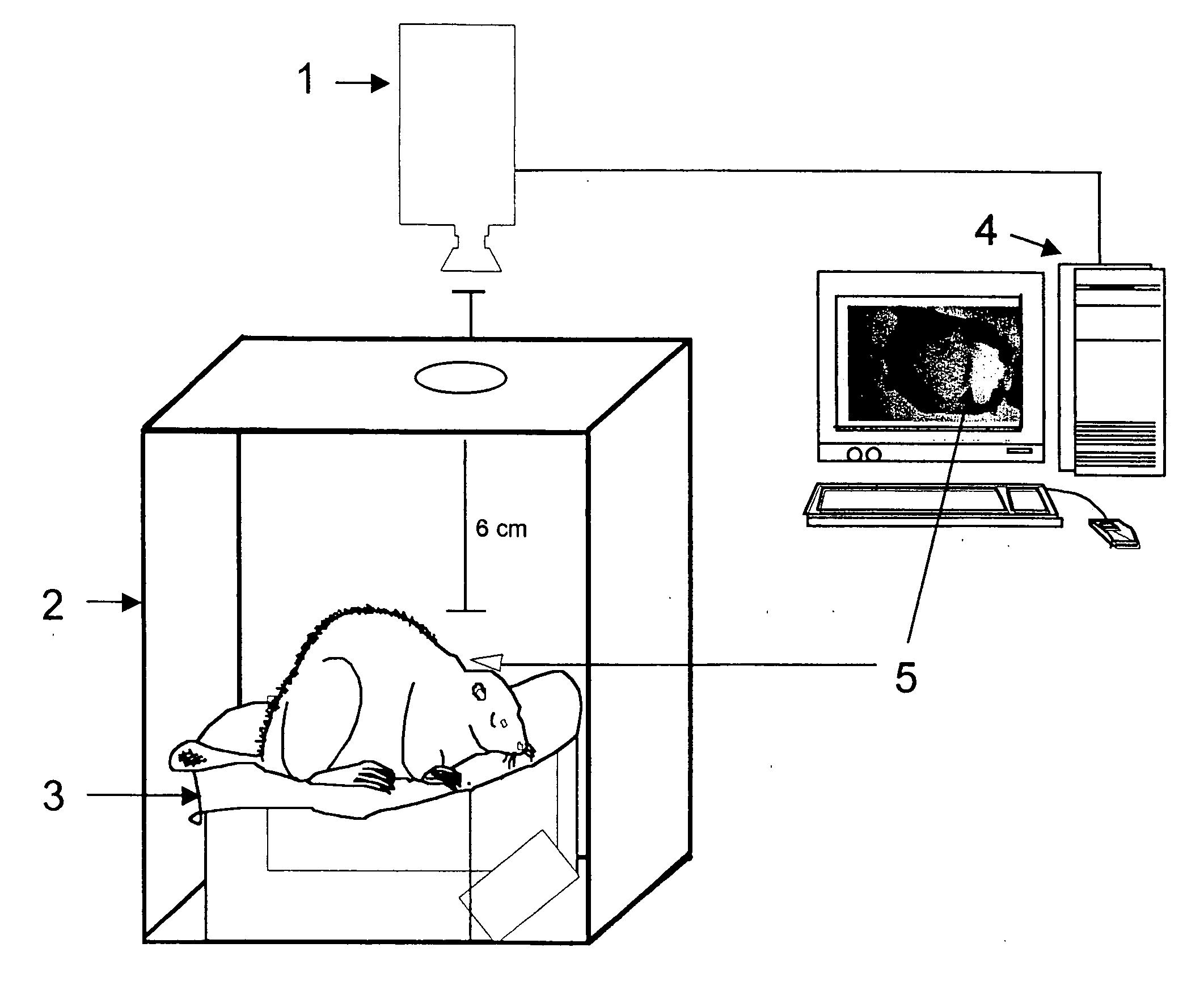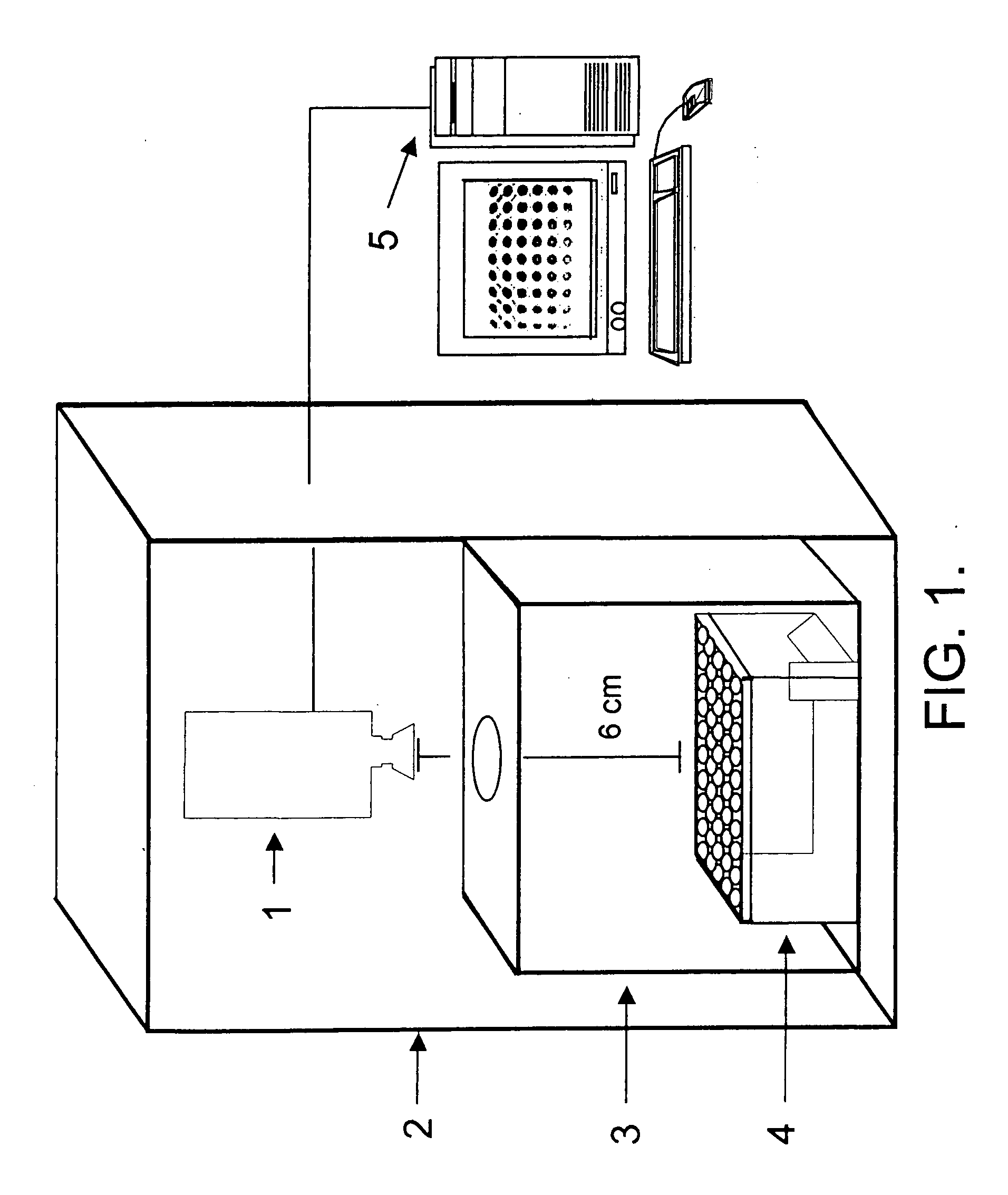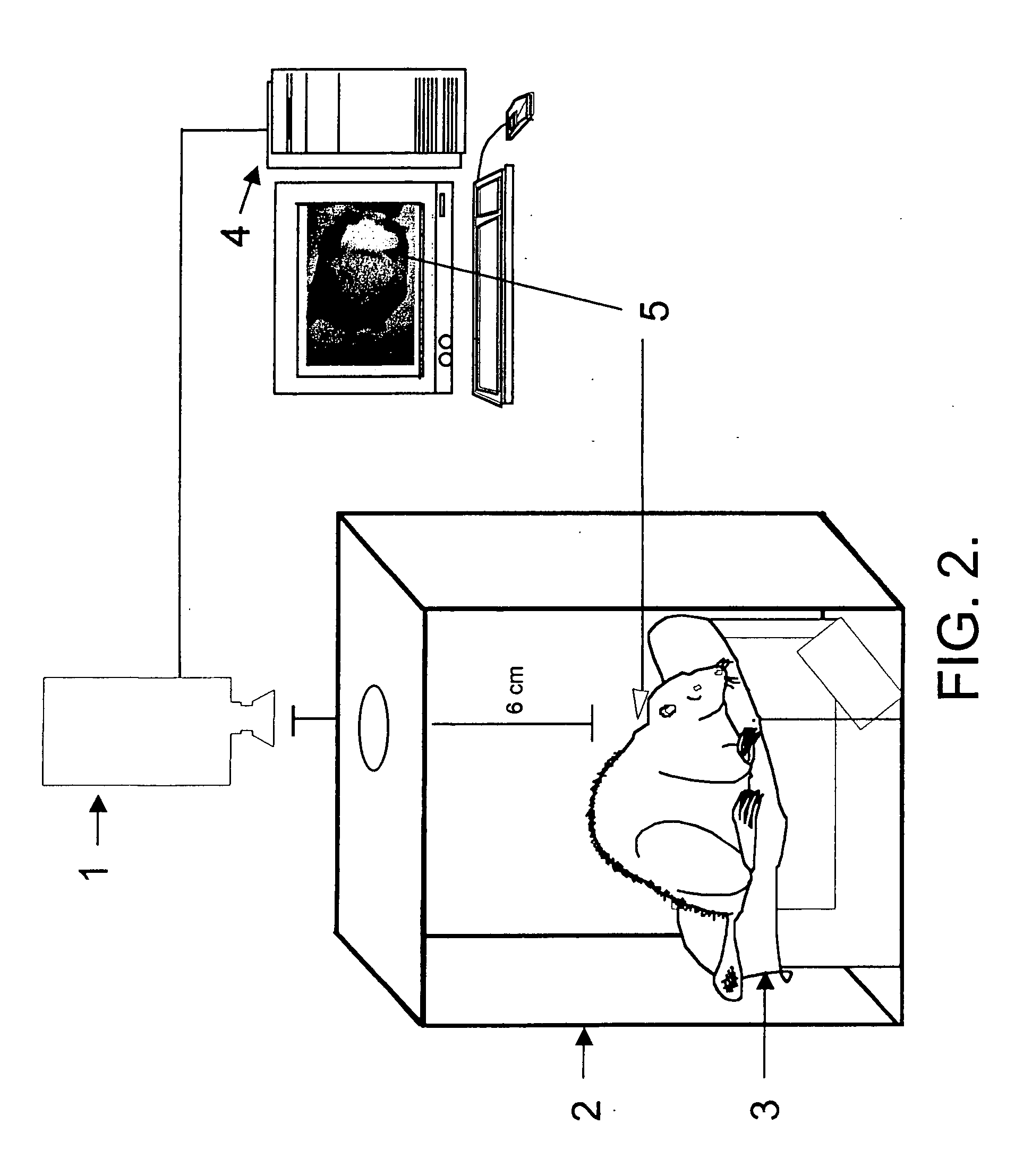Infrared thermography
a thermography and infrared technology, applied in the field of thermography, can solve the problems of limited dye use, inability to directly measure protein activity, so as to increase thermogenesis, increase ucp2 expression, and improve thermogenesis
- Summary
- Abstract
- Description
- Claims
- Application Information
AI Technical Summary
Benefits of technology
Problems solved by technology
Method used
Image
Examples
example 1
Design of an Apparatus for Infrared Thermography
[0122] The methods of the present invention utilize an apparatus that, advantageously, consists of a high resolution infrared imaging system and a central processing unit with appropriate software for data analysis. An example of a suitable system is that produced by FLIR Infrared Systems (the AGEMA 900) or the non-contact infrared thermometer (C-16010MP) produced by Linear Laboratories. FIG. 1 shows a schematic diagram of such an apparatus for infrared thermography of cell-free systems or cell culture. The isothermal chamber, constructed from a non-reflective material that provides a heat sink to dampen out temperature fluctuations (e.g., anodized aluminum) minimizes thermal noise (e.g., reflection and air currents) from the culture plates and surrounding environment. A plate holder can be placed within the isothermal chamber to maintain thermal uniformity across the plate. Use of an incubator also prevents fluctuations in the surrou...
example 2
Infrared Thermography in Cultured Cell Systems (e.g., Adipocytes and Yeast): Effect of Small Molecules on Thermogenic Activity
[0123] As part of the initial effort to validate the use of infrared thermography to monitor mitochondrial heat production, human adipocytes cultured in 96-well microtiter plates and yeast suspended in 384-well microtiter plates were treated with rotenone or carbonyl cyanide p-(trifluoromethoxy)phenylhydrazone (FCCP). Rotenone is an inhibitor of mitochondrial electron transport (Ahmad-Junan et al, Biochem. Soc. Trans. 22:237-241 (1994)) while FCCP is an uncoupler of mitochondrial respiration (Terada, Biochem. Biophys. Acta 639:225-242 (1981)). Subsequently, the heat produced from the cells was measured using an Agema Thermovision 900 Infrared Imaging System (FIG. 1). As shown in the dose response assays in FIG. 3, rotenone treatment inhibited thermogenesis in yeast (FIG. 3A) and human adipocytes (FIG. 3B). In contrast, FCCP stimulated heat production in both...
example 3
Effect of Protein Overexpression on Thermogenesis
[0124] In rodents, interscapular brown adipose tissue (IBAT) is an important site for adaptive thermogenesis (Himms-Hagen, Proc. Soc. Exp. Biol. Med. 208:159-169 (1995)) and is located in the interscapular region of rodents. This tissue contains abundant mitochondria which express the anion transporter, uncoupling protein (UCP1, formerly known as UCP; Ricquier et al, FASEB J. 5:2237-2242 (1991)). UCP1 uncouples oxidative phosphorylation from respiration in IBAT resulting in generation of heat instead of ATP. Although UCP1 is not abundant in Homo sapiens, UCP2 (Fleury et al, Nat. Genet. 15:269-272 (1997)) is abundantly expressed in humans. UCP2 mRNA is ubiquitously expressed and its expression is altered in obesity (Enerback et al, Nature 387:90-94 (1997)). Further, the antidiabetic thiazolidinediones (e.g., troglitazone) increase UCP2 expression, possibly by activating the nuclear receptor PPARγ, suggesting UCP2 plays a critical role...
PUM
 Login to View More
Login to View More Abstract
Description
Claims
Application Information
 Login to View More
Login to View More - R&D
- Intellectual Property
- Life Sciences
- Materials
- Tech Scout
- Unparalleled Data Quality
- Higher Quality Content
- 60% Fewer Hallucinations
Browse by: Latest US Patents, China's latest patents, Technical Efficacy Thesaurus, Application Domain, Technology Topic, Popular Technical Reports.
© 2025 PatSnap. All rights reserved.Legal|Privacy policy|Modern Slavery Act Transparency Statement|Sitemap|About US| Contact US: help@patsnap.com



